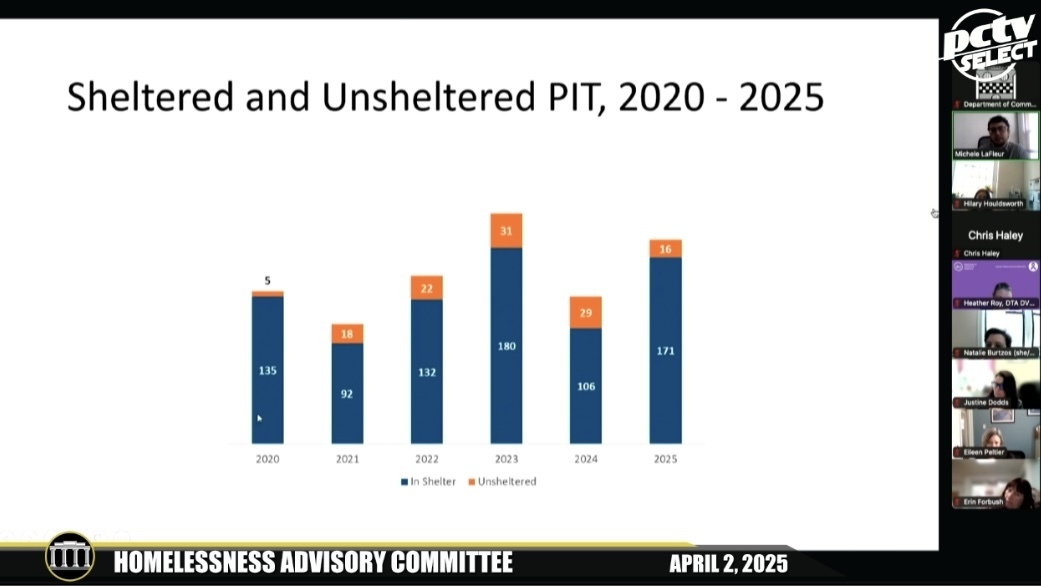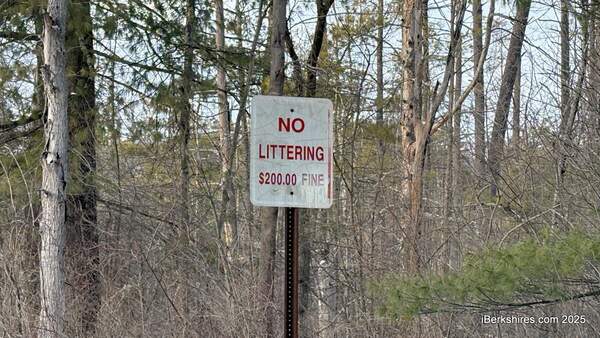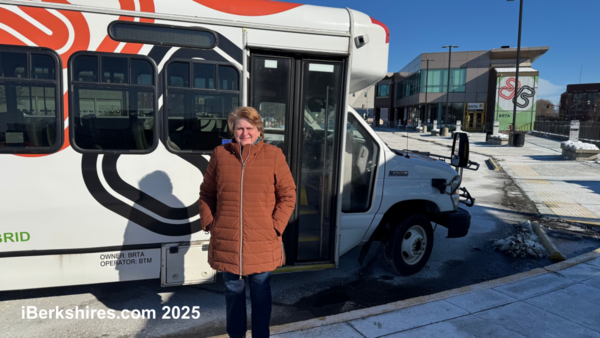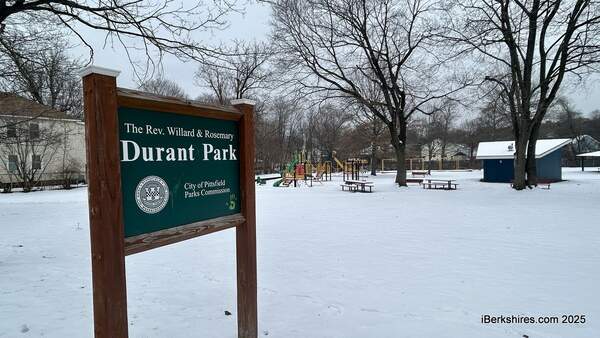
Pittsfield Homeless Count Increases Over 2024
PITTSFIELD, Mass. — There were 187 people experiencing homelessness in Pittsfield on the day of this year's Point In Time count, an increase of more than 50 from 2024.
On Wednesday, the Three County Continuum of Care presented the "sobering" 2025 PIT numbers to the Homelessness Advisory Committee.
"This is, to me, one of the very important presentations that we have each year," Director of Community Development Justine Dodds said.
On Jan. 29, 187 people reported experiencing homelessness: 99 people in families with at least one child and 88 adult-only households and individuals. Sixteen of the people were completely without shelter.
Data came from four city shelters, the Elizabeth Freeman Center, and scattered sites. These numbers are said to be on "the low end."
"And I say this with a caveat that we anticipate that these numbers could change. We still have not submitted final accounts to HUD yet, so there is a possibility that they will change slightly," explained Michele LaFleur, data and evaluation manager.
"There is also understanding often that these are typically undercounts. Usually there are a number of people experiencing homelessness in ways that are not typically visible, or it is not homelessness as defined by HUD in a particular way, but that we might consider that person to be experiencing homelessness."
The PIT is an attempt to determine how many people are experiencing homelessness in Hampshire, Franklin, and Berkshire counties. It is mostly done through a series of surveys, but also includes information from local service providers.
One of the ways Pittsfield receives federal funding is through the Continuum of Care, and this count illustrates a community's need.
In 2024, 135 people were experiencing homelessness on the day of the PIT count, and 29 were unsheltered. While the number of unsheltered individuals decreased from 29 last year, only five people reported being unsheltered in January 2020.
Of the 187 people included in the 2025 count, 47 people were under the age of 18, five people were between 18 and 24, 131 people were between 25 and 64, and four people were over the age of 65. LaFleur reported that the senior age group has remained even over the past couple of years, and the 25 to 64 age group increased significantly.
Committee member Eileen Peltier, CEO of Hearthway, pointed to the presentation slide indicating that 95 of the surveyed people identified themselves as Black, African American, or African. She pointed out that a total of 65 percent of the count are people of color, compared to the Berkshires population of well under ten percent people of color.
"That is a very disturbing slide to look at those numbers so out of balance with the population," she said.
"What we see across our continuum of care is that people of color experience homelessness at disproportionately higher rates than non-Hispanic white individuals in any place we are looking in our continuum of care," LaFleur reported.
Thirty people were chronically homeless in the 2025 count, compared to 13 in 2024. Homelessness is considered chronic when it is experienced for longer than a year and the person has a disabling condition.
"People aren't moving out of the shelter," reported committee member Erin Forbush, director of shelter and housing at ServiceNet.
"… These last two years it's probably been the least movement and the most movement in rents going up."
In early February, before the PIT numbers came out, Forbush reported that the ServiceNet saw lower numbers in its count than expected due to frigid weather.
"I am very clear to everybody: There are far more people that do not have a place that they can call theirs to go to every night," she told the committee on Wednesday.
"And I know there are families, as well, living in cars, and people like to be a little more anonymous when they have children, too. So I just want to put that picture together so people don't see the numbers as the numbers and that we're only trying to figure out something for 16 people because that would be a very, frankly, easy job for me."
She commented that the number for people over 64 experiencing homelessness seemed low and "I would have thought at least double that number," but it is often hard to gauge people's ages.
Dodds said the PIT count is always "sobering and important."
Tags: homeless,















